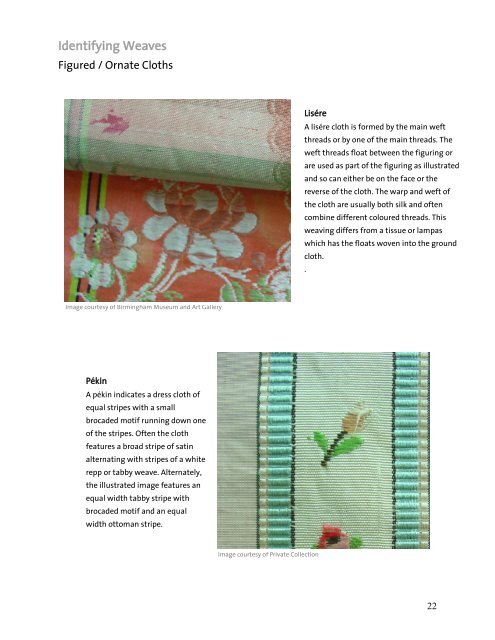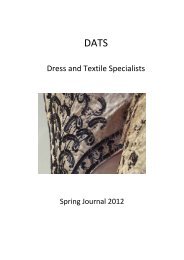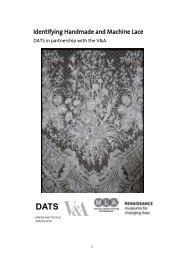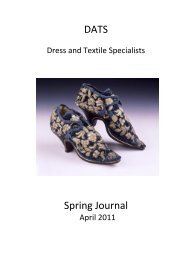Identifying Textile Types and Weaves 1750-1950 - Dress and Textile ...
Identifying Textile Types and Weaves 1750-1950 - Dress and Textile ...
Identifying Textile Types and Weaves 1750-1950 - Dress and Textile ...
You also want an ePaper? Increase the reach of your titles
YUMPU automatically turns print PDFs into web optimized ePapers that Google loves.
<strong>Identifying</strong> <strong>Weaves</strong><br />
Figured / Ornate Cloths<br />
Image courtesy of Private Collection<br />
Image courtesy of Birmingham Museum <strong>and</strong> Art Gallery<br />
X<br />
Pékin<br />
A pékin indicates a dress cloth of<br />
equal stripes with a small<br />
brocaded motif running down one<br />
of the stripes. Often the cloth<br />
features a broad stripe of satin<br />
alternating with stripes of a white<br />
repp or tabby weave. Alternately,<br />
the illustrated image features an<br />
equal width tabby stripe with<br />
brocaded motif <strong>and</strong> an equal<br />
width ottoman stripe.<br />
Lisére<br />
Image courtesy of Private Collection<br />
A lisére cloth is formed by the main weft<br />
threads or by one of the main threads. The<br />
weft threads float between the figuring or<br />
are used as part of the figuring as illustrated<br />
<strong>and</strong> so can either be on the face or the<br />
reverse of the cloth. The warp <strong>and</strong> weft of<br />
the cloth are usually both silk <strong>and</strong> often<br />
combine different coloured threads. This<br />
weaving differs from a tissue or lampas<br />
which has the floats woven into the ground<br />
cloth.<br />
.<br />
22





